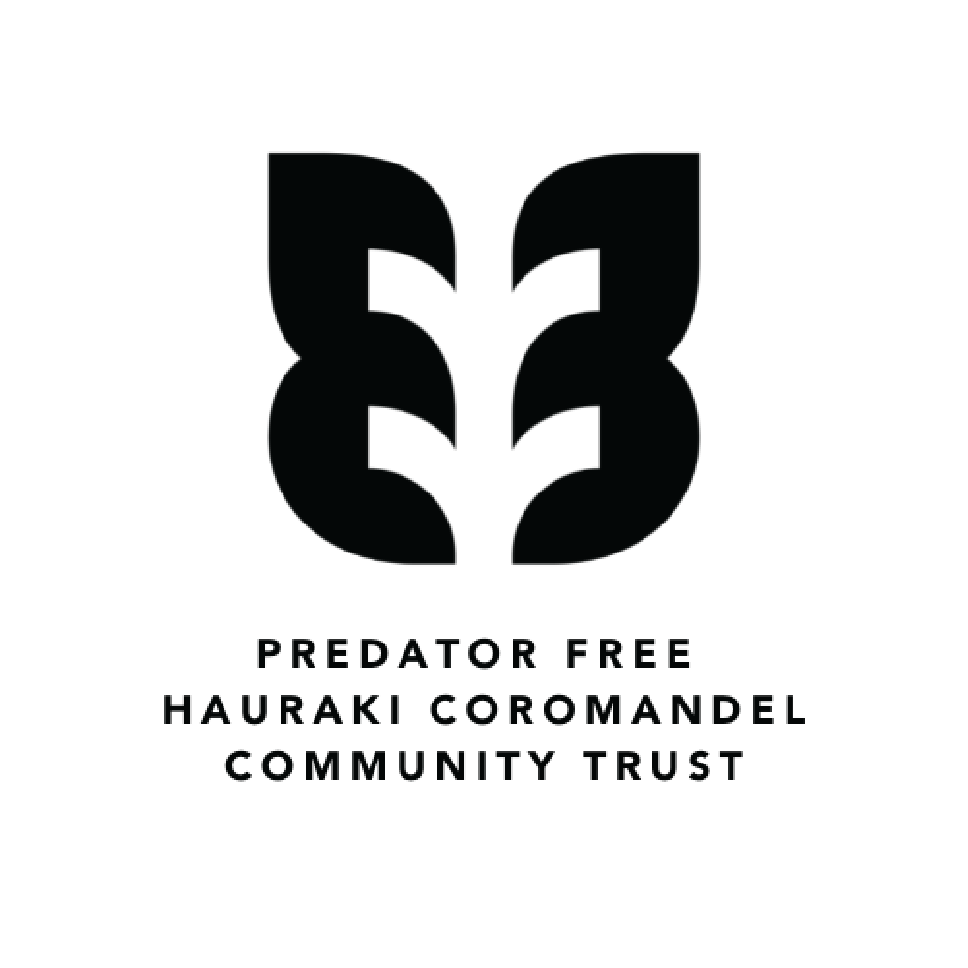Conservation Efforts Bring Neighbours Together
Wetlands surround us as we make our way to the birthplace of Mana Manu Trust, a conservation group with as much warmth as the seaside settlement of Whangapoua where it operates.
We shift the truck to its lowest gear for the climb up to a pocket of Coromandel Peninsula paradise. It’s worth the occasional skid as we are greeted by ecologist duo and co-founders of the Trust, Meg and Hamish, accompanied by a chorus of birds and breathtaking views of Whangapoua Harbour.
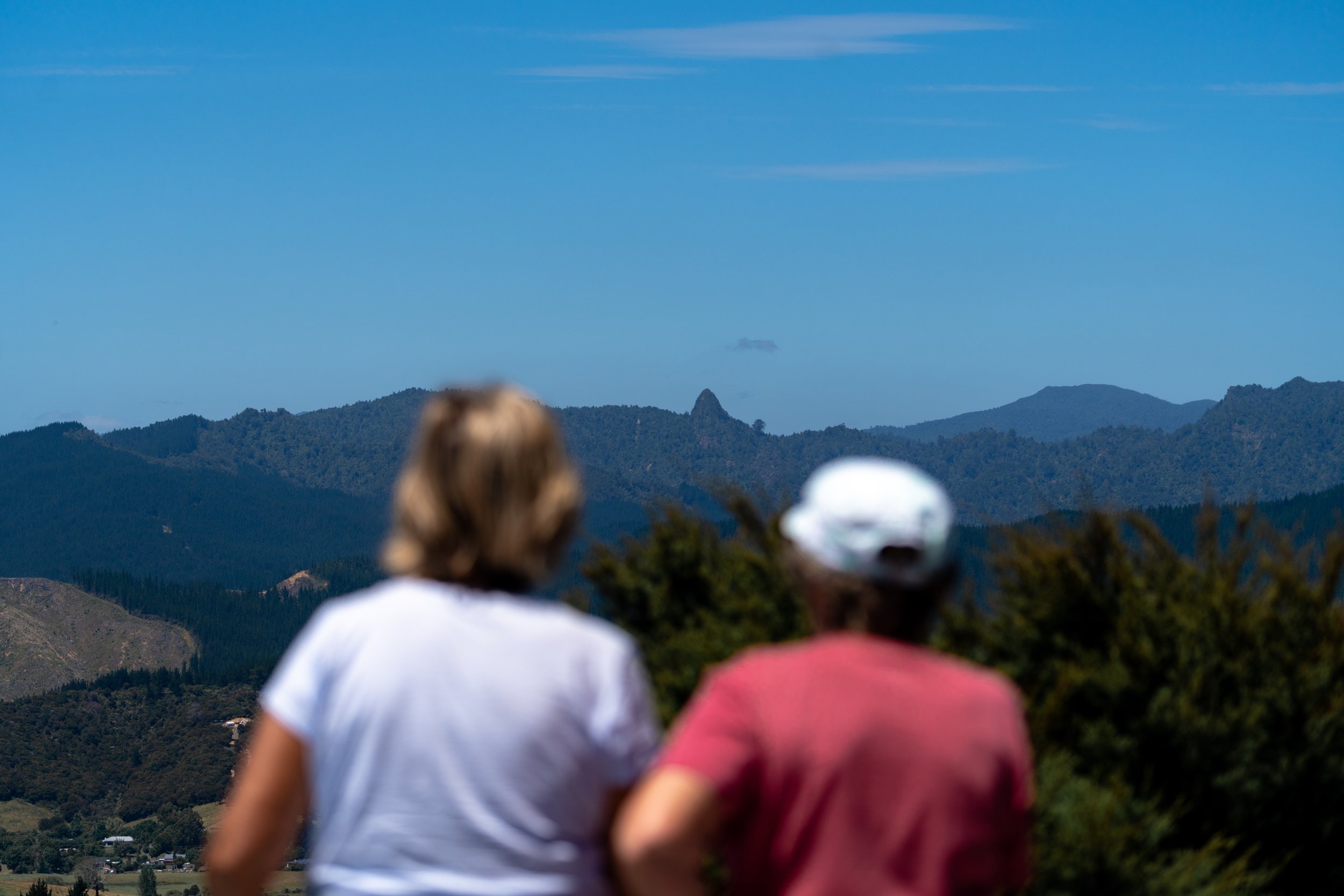
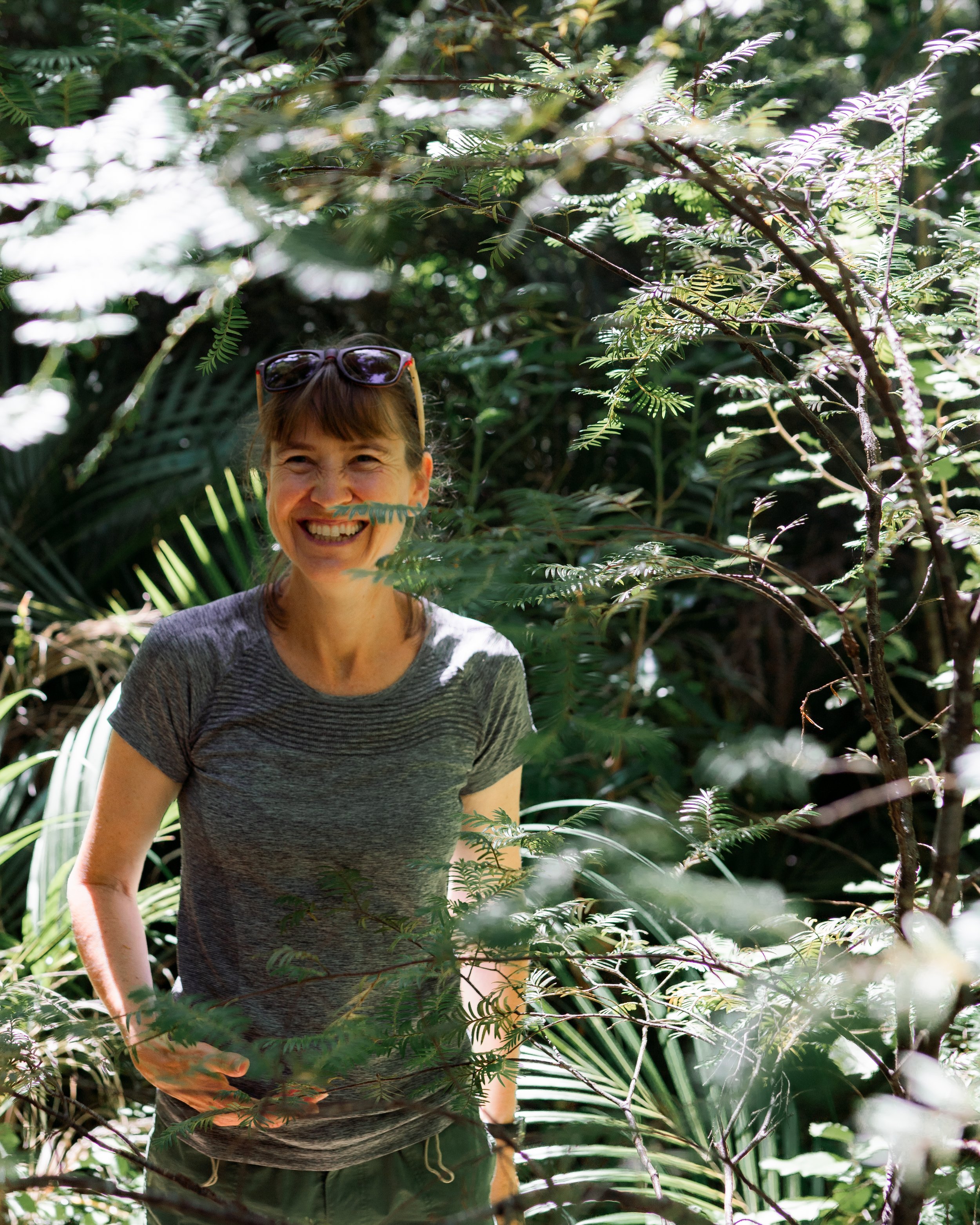
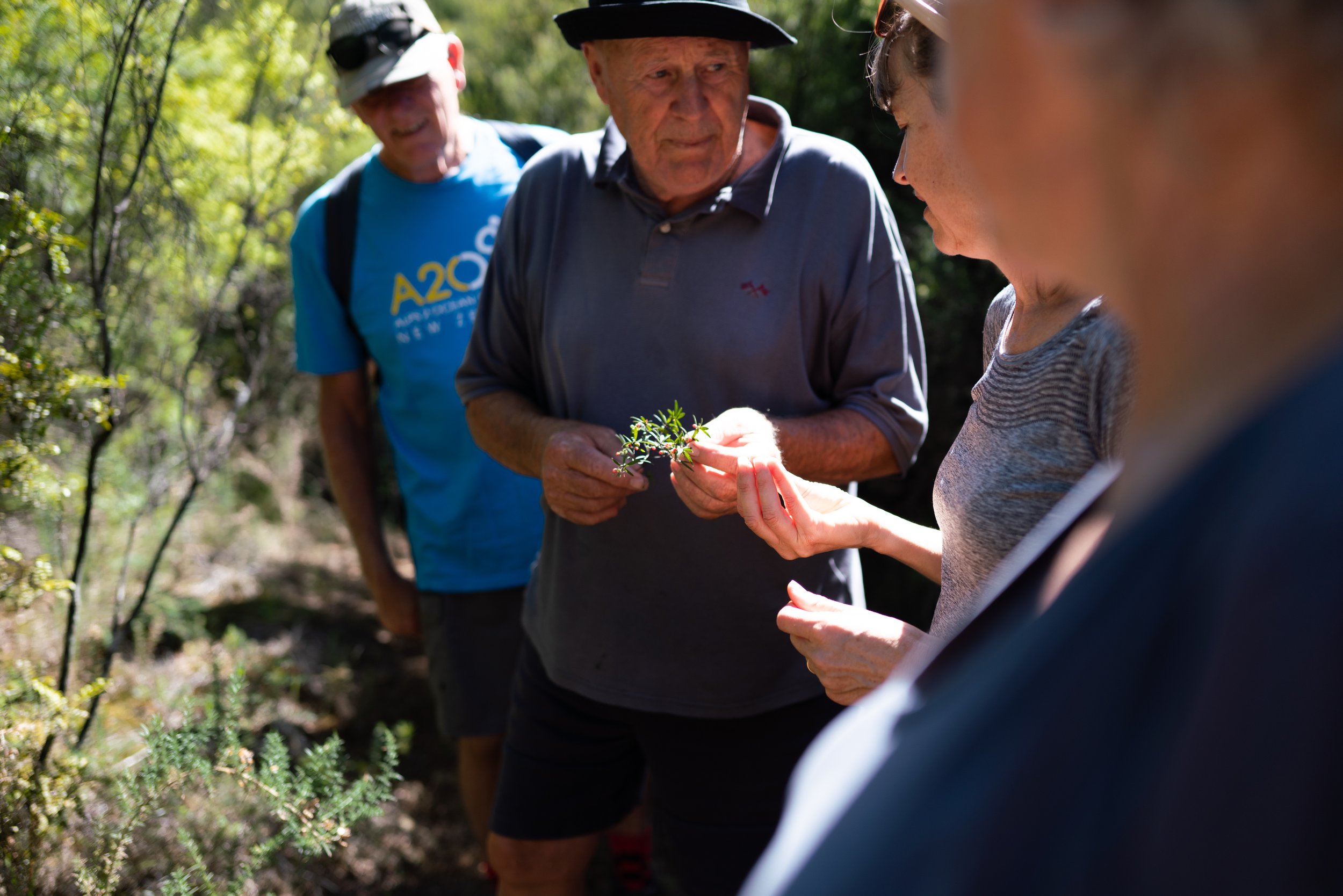
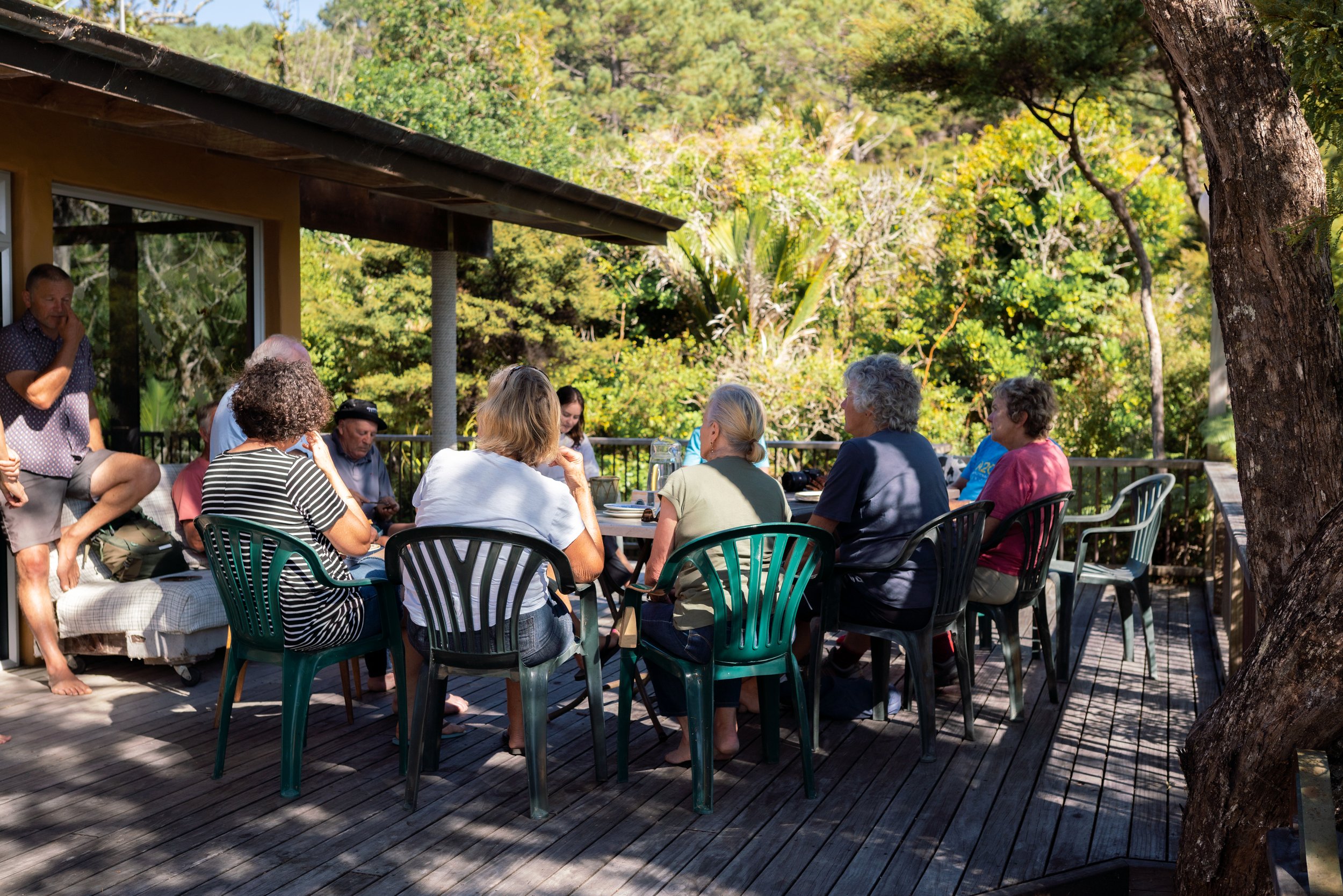
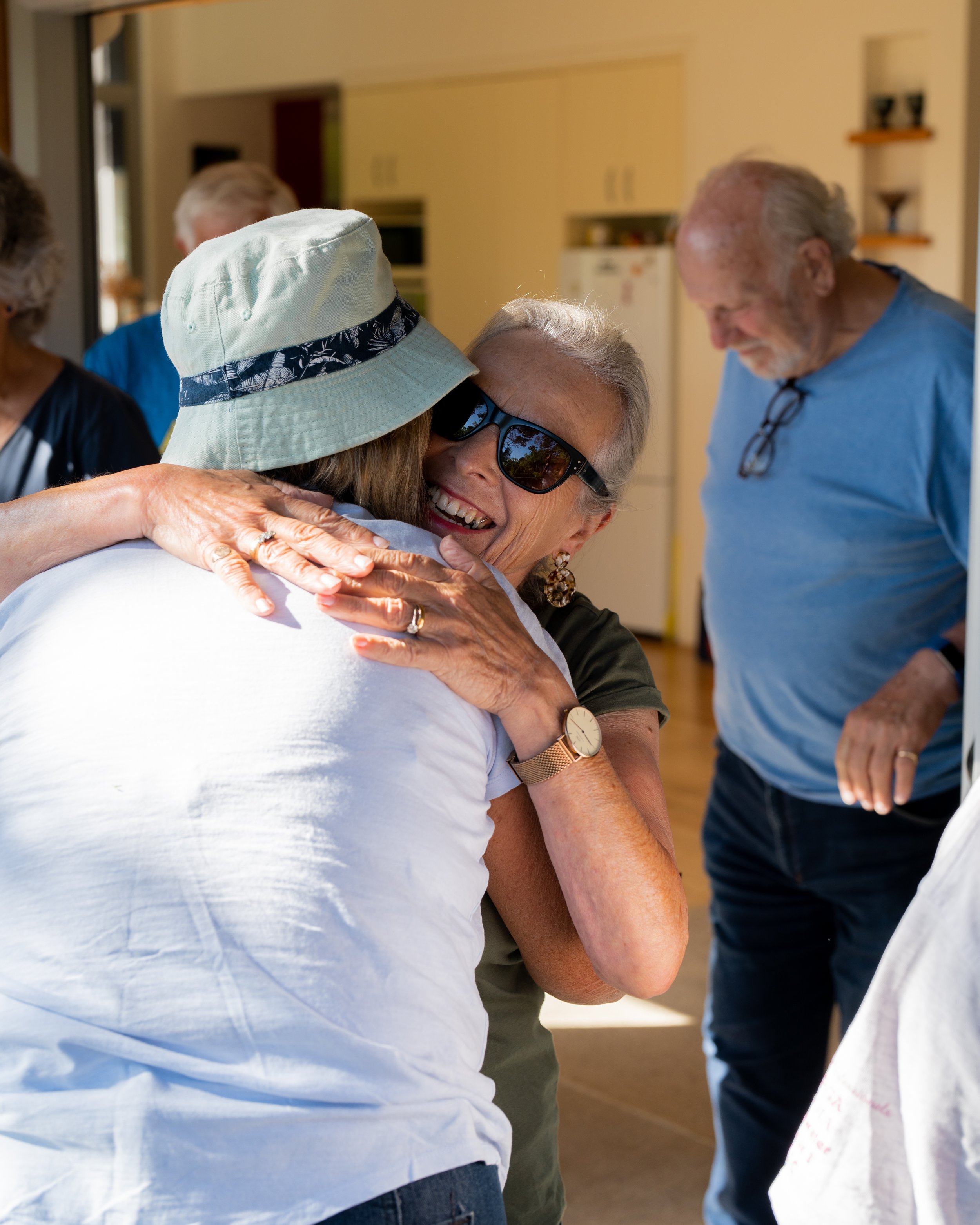
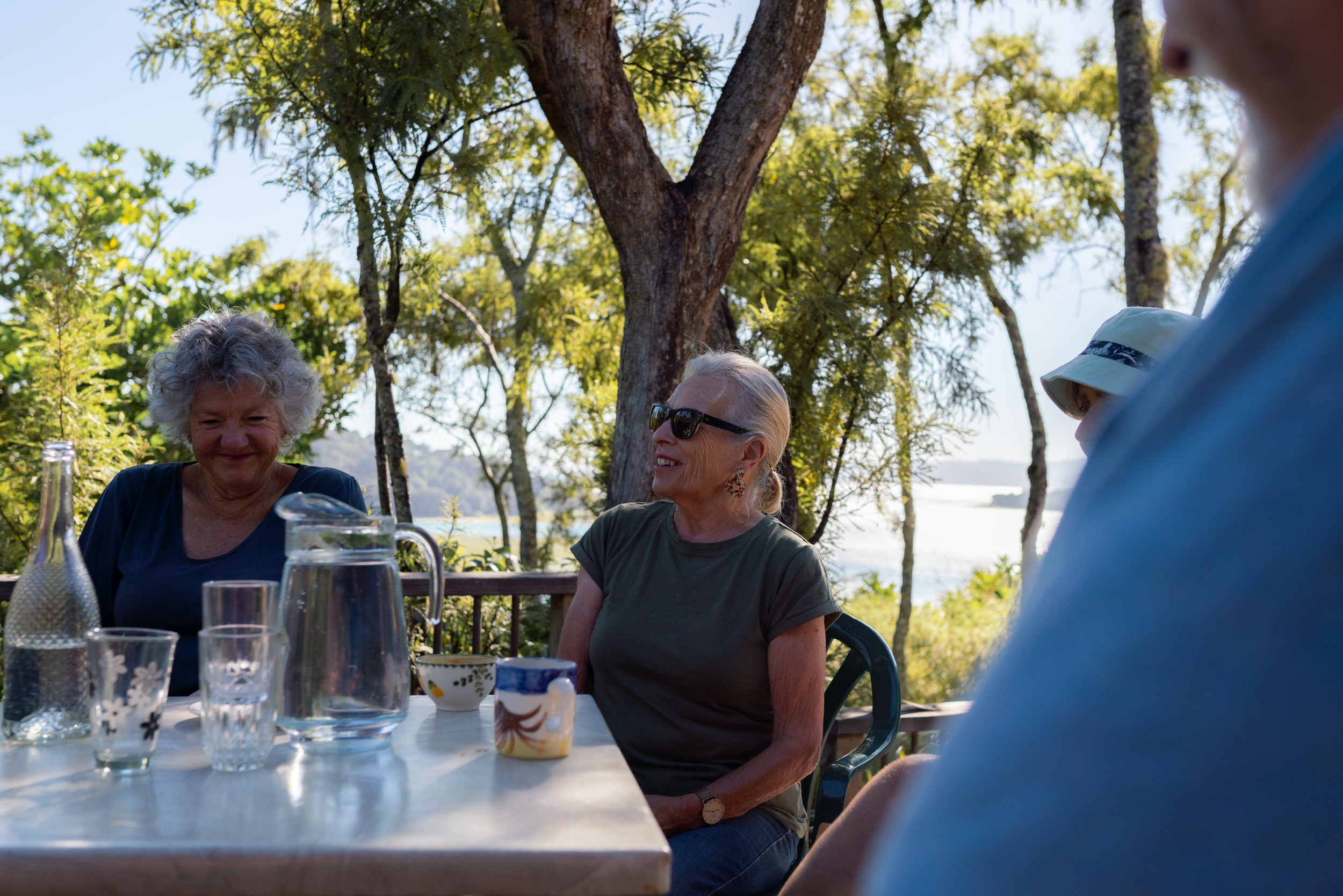
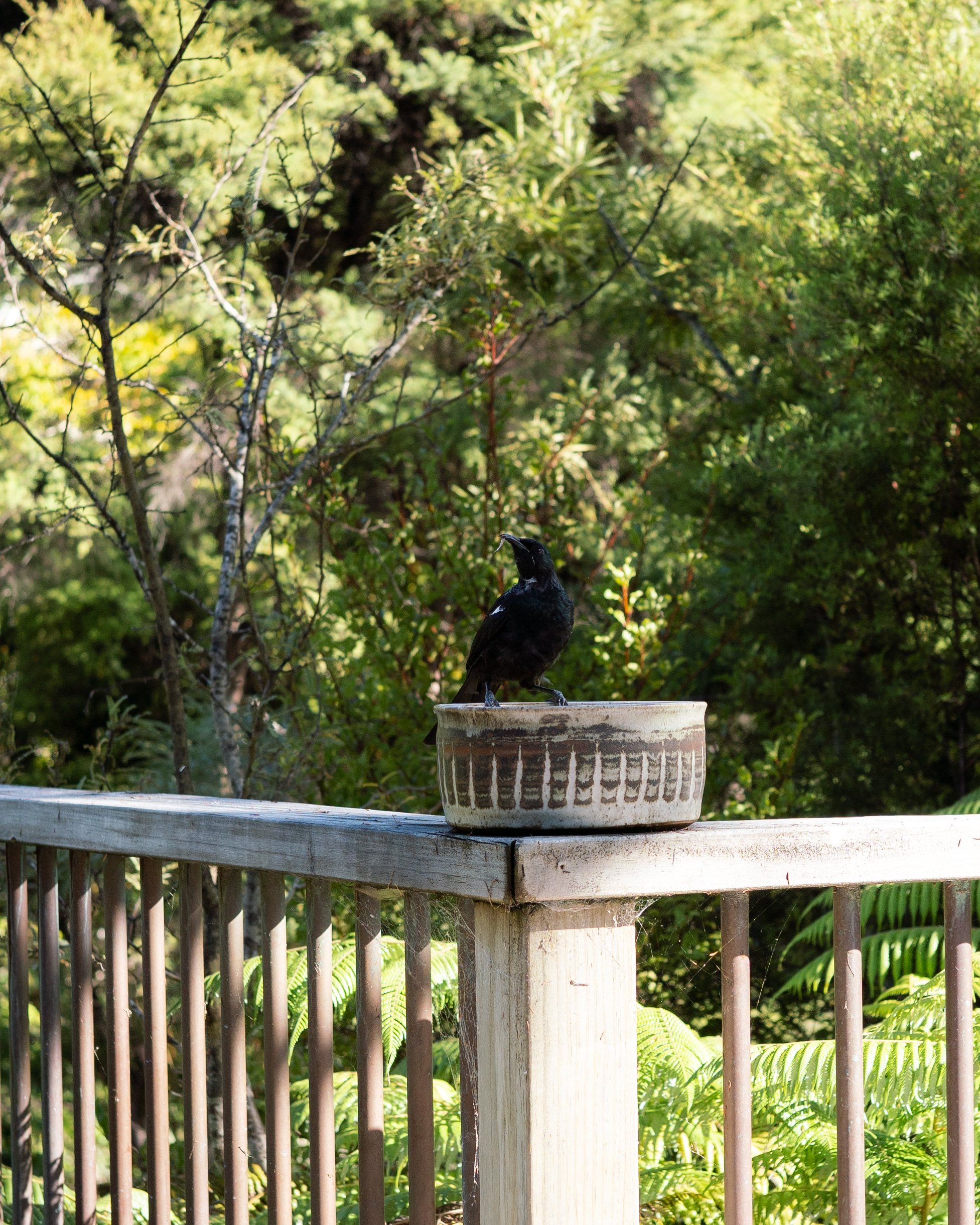
The rest of the MMT team venture short distances from their surrounding properties to tell us their story over tea and homemade fruitcake (thanks Joi!). As they reunite with one another after the Christmas break, the collective joy and embrace make it easy to see why they have been working on the project together for a solid fifteen years.
It’s not surprising that native birds join us, too. A juvenile Tui makes one of its frequent visits to the bath (bowl of water) perched on the corner of the deck. After its refreshing dip, the Tui ventures out to the surrounding native bush and leaves us to unpack the fruits of MMT’s labour. “The best thing about owning the land is being part of this group and larger purpose” Jill (the group's secretary) says while looking around the passionate community they share. For newer members Mary and Eric H, they say they’ve “found their place in heaven”.
The story of this area’s complex history is reflected in the staggering regenerating forest, with contrasting 400+-year-old Kauri, 30-70-year-old kānuka and tānekaha, and seedlings only just beginning their journey. It was the Regional Council’s suggestion in the late 1990s to convert the then-farmed land into large bush subdivisions. As people began to create homes and baches in the bush, the idea of combining efforts of pest control across the almost 320 hectares of privately owned properties lead to the formation of MMT in 2006.
Jill makes clear the group hasn’t just been removing predators and weeds, and has put a lot of thought time and effort into ensuring the right species are added back into the ecosystem. There is a wonderful spread of expertise in the Trust from ecologists, to lawyers and farmers, painting a picture of diverse thought and impressive teamwork.
We finish our fruitcake and venture out, winding around the wetlands and up the neighbouring hill to visit one of the group’s most cherished tracks. The elusive and highly-endangered Matuku (Australasian Bittern), Banded Rail, and Fernbirds have all been spotted by MMT members in this area, reminding us how important their work is. This isshowcased during a walk with many examples of initiative to admire. My eyes, however, are drawn to the lowland coastal forest ahead that looks like it’s been plucked straight from a Jurassic Park movie. Breadcrumbs from estuarine to freshwater, wetland, and forest areas lead us here and are a reminder of how connected these ecosystems really are.
Baiting has been the mainstay of the project's pest control, with many landowners, such as trapping extraordinaires John and Glenda, contributing to trap testing and more. Recently Kiwi were heard in the area which prompted an audit to guide the next exciting stage of their work. Now a ‘Ring of Steel’ consisting of DOC200 and DOC250 traps is planned, and the group hope more Kiwi will call this protected part of Aotearoa home once more.
Collaboration is a key contributor to conservation success. MMT cites the hard work of other local environmental groups such as Project Kiwi, Ernslaw One's Kiwi block, Ring's Beach wetland, Habitat Tuateawa, and MEG, for enabling Kiwi to expand out from their safe havens to repopulate new areas like Whangapoua. They say they’ve been encouraged by support from Ngāti Huarere and interest from Whangapoua Community Association who are now setting up pest control around the village.
On a quest to understand more about the dynamics of this mixed group of landowners, we tour around some of their properties in awe of the efforts that reach right into each of their backyards. At Janice and Chris’ house, their backyard project consists of a ~1km wooden walkway that winds around the ancient Kauri and Rātā trees, a remnant tree fuchsia, and many other native species on their doorstep. The view from their wrap-around deck is almost indescribable, with a few rogue pines being eyed up by the team for removal - another ongoing component of their work.
With so much more to discuss, our stomach’s kindly remind us of the long morning chatting and walking, so we head over to Jill and Eric’s for a scenic lunch. Former farmland is not an ideal spot for these garden enthusiasts to have settled, but the couple bravely took up the challenge in 2003. An inconvenient block of compacted clay has since been transformed into a (not so) secret garden of native species. When asked how they managed such a feat, Eric told us with a smirk “I come down and talk to the plants, telling them they’d better keep growing fast or they’ll have me to answer to.”.
With a day full of Eric and the group's humour, teeming passion, and a delicious spread of homemade quiche, fresh salad, and cold beverages awaiting our arrival, it was hard not to fall in love with the people, work, and place of Mana Manu Trust. The group hope more volunteers will join their conservation journey and are grateful for grants provided to date from Waikato Regional Council, Department of Conservation, WWF, and QEII.
Article by: Siobhan O’Connor
Photography by: Savannah Walker, Taken of You
If your community conservation group would like to share your story and be featured on our blog, please get in touch! If you are interested in volunteering in the Hauraki Coromandel head over to our Contribute page and read more.

